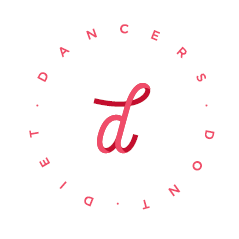The link between Dancers and Eating Disorders
Last Saturday was World Eating Disorders Action Day.
And I had a flashback to a moment several years ago where a doctor said, abruptly,
"all ballet dancers have eating disorders. They have it so they can keep themselves thin".
No, THIS IS A HUGE (and unfortunately common) MISUNDERSTANDING.
Let me do some myth-busting for you.
Eating Disorder is Not a Choice
First, eating disorder isn't a choice.
No one 'gets' an eating disorder because they 'want' it.
It's a biopsychosocial problem.
Genetic, psychological, and social factors all come to play in an unfortunate way that the brain circulatory changes.
The eating behaviour (whether that be not-eating or binge-eating or purging) is a symptom of the complicated situation.
Ballet isn’t the Cause of Eating Disorders
Second, ballet is not the cause of eating disorder.
This is true even if a dancer had an eating disorder.
The ballet culture and/or the training environment can be one of the main triggers.
It's true that dancers have higher incidence of eating disorders, and this is a combination of the ballet culture being triggering and eating-disorder-promoting, as well as the temperament that dancers often share.
There are characteristics known to be over represented in eating disorders.
For example, perfectionism, obsessionality (e.g. exactness), sensitivity (especially to criticism, mistakes, punishment), anxiety, difficulty with uncertainty, rule-bound...
When there is dieting (malnourishment or lack of food energy supply), these temperaments and genes and the environmental voices (e.g. "be thin") connect tightly to develop eating disorders.
To make things a bit more tricky, during puberty the hormones start to shift and interact with the genetic programming, making it easier for this connection to establish.That's why eating disorders in teenage dancers can be common.
By the way, the temperaments mentioned above are in fact what makes the dancer successful in life.
Having these characteristics isn't a bad thing; it's just that these characteristics can be used destructively in the development of eating disorders, so knowing the signs of the disorder is important.
Signs and Symptoms of Eating Disorders
So what are the signs you can look out for?
Rapid weight change (loss or cycling)
Low energy, feeling tired all the time
Loss of, or irregular, periods
Preoccupation with eating, food, body shape and weight
Feeling anxious and/or out-of-control around meal times
Dieting (counting calories, avoiding food groups)
Vomiting or using laxatives
Excessive exercising (e.g. continuing to exercise even when sick or injured)
Remember, no one gets an eating disorder because they want to.
The change in the brain wiring makes it very difficult for a person to recognise the disruptive behaviour. I know "eating disorder" sounds scary.
But if you've broken a bone, would you hide that and avoid treatment and continue to take classes?
No, because you won't be able to train properly and will be making the situation worse.
Seeking treatment early will let you recover faster.
And taking care of your body is a natural and normal thing as a dancer, right? You are allowed to seek help for eating problems too.
And it will help your life thereafter be a much, much more fulfilling and enjoyable one.
